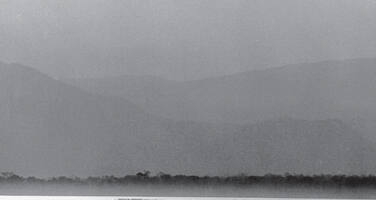Mana Pools National Park, Sapi and Chewore Safari Areas
Factors affecting the property in 1994*
- Illegal activities
- Oil and gas
Factors* affecting the property identified in previous reports
- Poaching
- Oil exploration programme
International Assistance: requests for the property until 1994
Total amount approved : 20,000 USD
| 1990 | Contribution for the organization meeting for preparing ... (Approved) | 20,000 USD |
Missions to the property until 1994**
Information presented to the Bureau of the World Heritage Committee in 1994
- PROPERTY: MANA POOLS. SAPI AND CHEWORE RESERVES (Zimbabwe)
- DATE INSCRIBED AND CRITERIA: 1984. ii, iii, iv
- TECHNICAL ASSISTANCE FROM WORLD HERITAGE FUND: None
- CONDITION OF PROPERTY:
When this property was listed it was one of the three most important refuges in Africa for the black rhino with a population then of 500. By the end of this year there will be none as the last ten remaining in the wild are being captured and translocated to an intensive protection zone in another part of Zimbabwe. The Mana Pools site is not alone in suffering this drastic decline as Zimbabwe as a whole has lost 95% of its black rhino population over the past decade. Elephant poaching has increased in the site as well and although numbers are relatively low, animals with larger tasks are selected.
The gangs that have conducted the poaching are almost all based across the border in Zambia. From 1 985 to 1993, 166 poachers, mostly all Zambians have been killed by the authorities and another 88 captured. Four Zimbabwean government personnel have been killed in this "war of the rhinos". The middle men who then take the rhino horn, supply it to an international network, primarily in North Korea, Taiwan and South Africa.
5. EVALUATION:The Mana Pools site has lost a "flagship" species and much of its integrity. Many national and international conservation organisations were and are still involved in efforts to save the species but to no avail. The World Heritage Committee never received a request for assistance from the Zimbabwe authorities and Zambia has never acted on the Committee's invitation to nominate the adjoining Zambezi park. In any case, there was little likelihood that the Fund or the Committee could have made a large difference as the traffic in rhino horn throughout the world is underground. Pressure on the Zambian Government from other organisations was not effective and two of the three main sources of demand are countries that are not eligible to join the Convention. As the site was also inscribed for other values its inscription on the World Heritage list remains valid.
6. SUGGESTED ACTION BY THE WORLD HERITAGE BUREAU:Other than recognise the loss and the lack of any effective means to prevent it there is little that the Bureau can now do as the species been extirpated from the site. The World Heritage Centre, however, could be asked to expand its linkages with the Secretariat of the Convention on International Trade on Endangered Species (CITES) in order to help the Committee play a more active role in other sites that are suffering similar pressures.
7. REFERENCES:Bradley-Martin, E. 1994. The Slaughter of Zimbabwe's Rhinos. Swara. January/February.
Summary of the interventions
Decisions adopted by the Committee in 1994
18 COM IX
SOC: Mana Pools, Sapi and Chewore Reserves (Zimbabwe)
Mana Pools, Sapi and Chewore Reserves (Zimbabwe)
The Committee regretted that with the relocation of the ten remaining rhinos from this Park to an intensive protection zone, this World Heritage site has lost one of its "flagship" species. The Committee urged the Centre that in order to protect populations of similar species in other World Heritage sites, it should expand its cooperation with IUCN's Species survival Commission and the Secretariat of the Convention on International Trade on Endangered species (CITES).
18 BUR VI.B
Mana Pools National Park, Sapi and Chewore Safari Areas (Zimbabwe)
The Bureau was informed that the property was one of the most important black rhino refuges at the date of inscription with a population of 500. The ten remaining rhinos are being captured and translocated for intensive protection. The site has never received assistance from the World Heritage Fund to control poaching.
The Bureau raised concern about this loss of one of the World Heritage values of the site, and asked the Centre to work closely together with CITES and IUCN to determine the lessons learned from this unfortunate experience. This specific case could be used to coordinate efforts by the World Heritage Convention and the CITES Convention Secretariats.
Exports
* :
The threats indicated are listed in alphabetical order; their order does not constitute a classification according to the importance of their impact on the property.
Furthermore, they are presented irrespective of the type of threat faced by the property, i.e. with specific and proven imminent danger (“ascertained danger”) or with threats which could have deleterious effects on the property’s Outstanding Universal Value (“potential danger”).
** : All mission reports are not always available electronically.


